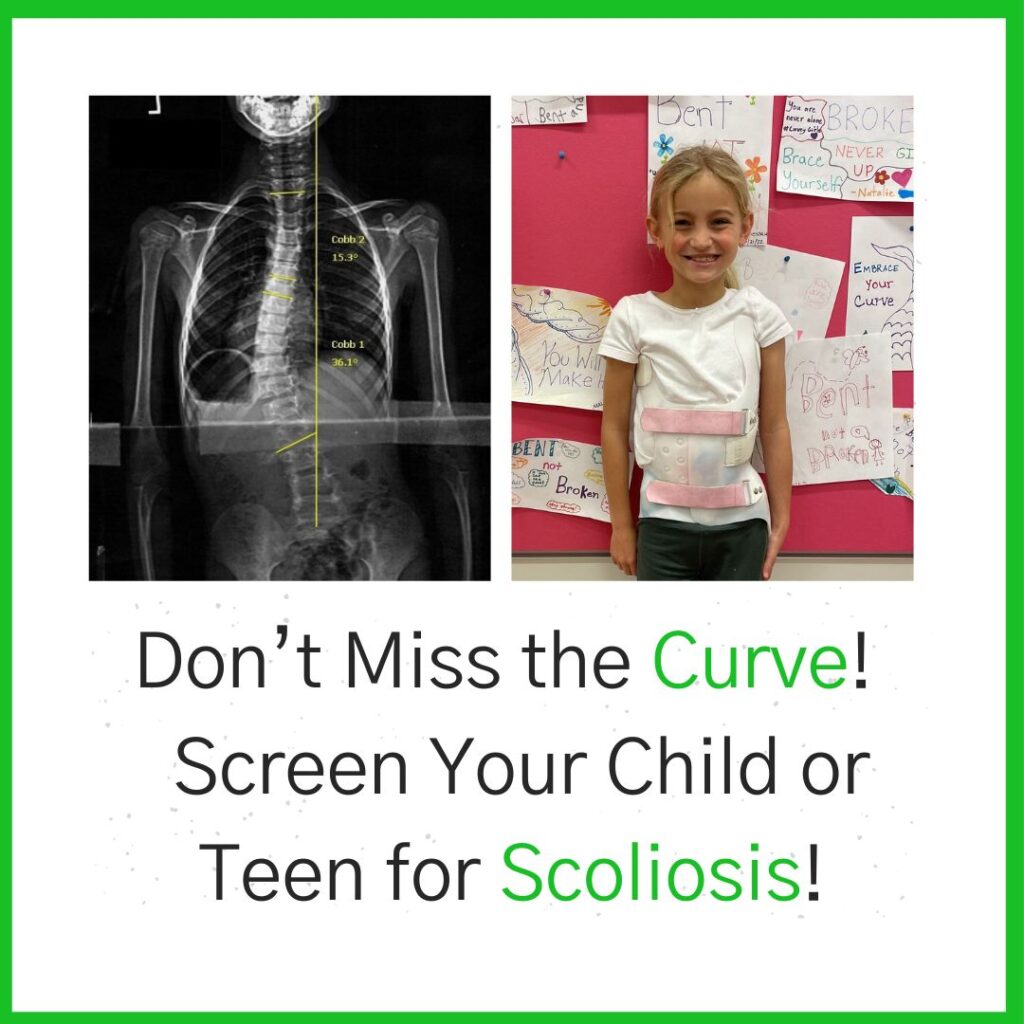June is National Scoliosis Awareness Month
According to Luke Stikeleather, Founder, President, and Chief Orthotist at National Scoliosis Center, “Early detection of scoliosis is the key to providing a child the opportunity to be treated with conservative treatment options, such as bracing, and helping them avoid the need for surgery.”
Some things to know about scoliosis:
- It is an abnormal curvature of the spine greater than 10 degrees.
- Gender: Girls are more likely to require treatment for scoliosis than boys.
- Age: Scoliosis typically appears in children between the ages of 10 and 15.
- Family history: If there is a family history of scoliosis, your child has an increased risk of developing the condition.
- Some medical conditions, such as muscular dystrophy, spinal muscular atrophy, cerebral palsy, and connective tissue disorders, are associated with an increased risk of scoliosis.
If your child is diagnosed with scoliosis, there are several treatment options available, including:
- Watch and Wait. Many curves are minor and only require monitoring by the doctor. It is important to adhere to your doctor’s recommendations for follow ups to ensure any curve progression is identified promptly.
- Bracing. A brace is a device that is worn on the body to prevent curve progression, and at times, it may achieve some curve correction. Parents should discuss the various brace types with their orthopedic specialist.
- Physical Therapy. Scoliosis-specific, Schroth Physical therapy can help to strengthen the muscles around the spine and improve posture. Frequently, Schroth is combined with Rigo Cheneau style bracing.
- Surgery. Surgery may be required for children with severe scoliosis.
It is important to see a doctor right away to have your child screened for scoliosis if you notice any of the following signs or symptoms:
- One shoulder is higher than the other.
- One hip is higher than the other.
- A prominent rib cage on one side.
- Asymmetry of the waist.
- A visible S curve in spine.
- Back pain (although most patients do not have back pain).
Early detection is the key to ensuring that non-operative treatments are an option for your child. If you have any concerns about your child’s spine, please talk to your pediatrician.
